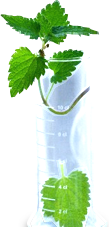



Author(s): Nguelewou LemLon Flora, Biapa Nya Prosper Cabral *, Chetcha Bernard, Kengne Fotsing Christian, Tankeu Nzufo Francine, Nanfack Pauline, Pieme Constant Anatole and Telefo Phelix Bruno
Sickle cell anaemia (SCA) is a genetic disorder characterised by the presence of haemoglobin S in red blood cells. Current antioxidant treatments are expensive and long-term toxic effects can follow. The present study aimed at evaluating the antisicking and antioxidant properties of Theobroma cacao beans extracts in order to contribute to the management of SCA patients through new therapies based on natural substances. Cocoa bean extracts (from Santchou and Obala) were macerated in a mixture of water/ethanol (pH=3). The anti-sickling activities of both extracts followed by their effects on osmotic fragility of erythrocytes were assessed. Their antioxidant and scavenging activities on free radicals such as 2,2-Diphenyl-1-picrylhydrazyl, 2,2’-azino-bis-[3-ethylbenz-thiazolone-6-sulfonic acid (ABTS) were also investigated as well as their phenolic contents. The cocoa extracts from Obala presented the best antisickling activity with 64.34% sickle cell reduction after 24 h. The extracts from Santchou did not present any sickling reduction after the above-mentioned time. A decrease in the haemolytic percentage was observed while the concentration of saline and extracts were increasing. Cocoa beans extracts revealed a high content in polyphenols, flavonols as well as a high antioxidant potential and scavenged free radicals depending on the test sample concentration, with IC50 ranging between 1.93 and 2.34 μg/mL; 3.85 and 4.46 μg/mL and 3.53 and 4.61 μg/mL, on the free radicals DPPH, ABTS and NO, respectively. Theobroma cacao from Obala exhibited the best in vitro activity and constitute a preliminary step to the development of a future treatment against SCA.